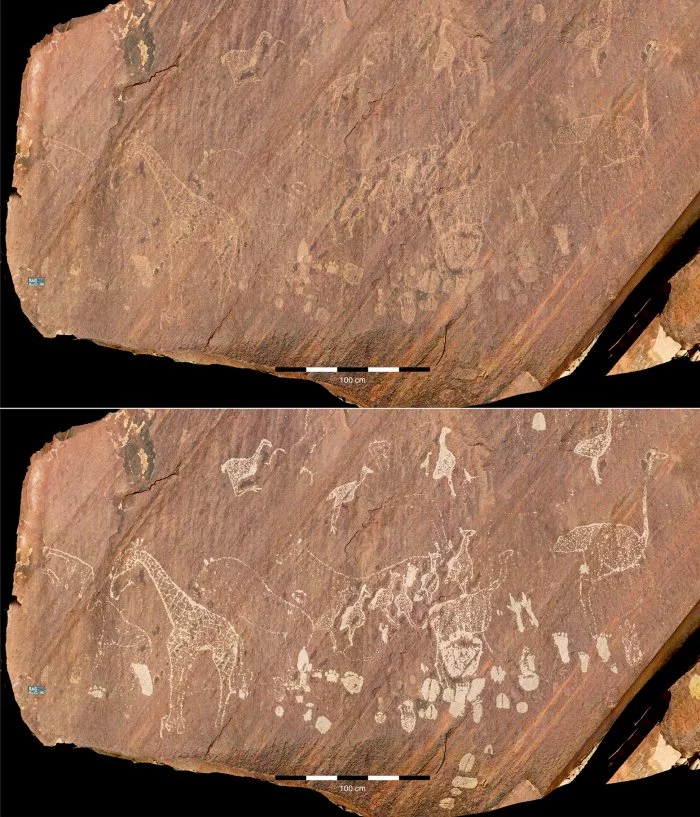Stone Age artists carved detailed human and animal tracks in rock art in Namibia
Namibia is rich in hunter-gatherer rock art from the Later Stone Age (LSA); this is a tradition of which well-executed engravings of animal tracks in large numbers are characteristic.
The sites examined in this study are located in the Doro! nawas mountains of Namibia, and have abundance of track engravings on single panels.
A recent research project, from which this article has emerged, has attempted to fill the research gap; it entailed indigenous tracking experts from the Kalahari analysing engraved animal tracks and human footprints in a rock art region in central Western Namibia, the Doro! nawas Mountains, which is the site of recently discovered rock art.

In this study, the researchers defined the species, sex, age group and exact leg of the specific animal or human depicted in more than 90% of the engravings they analysed (N = 513).
Their work further demonstrates that the variety of fauna is much richer in engraved tracks than in depictions of animals in the same engraving tradition.
The analyses reveal patterns that evidently arise from culturally determined preferences. The study represents further confirmation that indigenous knowledge, with its profound insights into a range of particular fields, has the capacity to considerably advance archaeological research.
Prehistoric hunter-gatherers arguably depended for their survival on their ability to draw as much information as possible from the tracks of animals and people.

As much as prehistoric rock art itself is a global phenomenon, so is the occurrence of tracks within the spectrum of motifs.
Among the 513 tracks analysed in total, the experts identified 345 quadrupeds and 62 bird tracks (407 in total from 40 different species; Rhinoceros sp. is listed as a taxon, but not counted as a separate species).
We divide these into a group of ’frequently’ depicted species (10 depictions or more), a second group of ‘less frequently’ depicted species (between 3 and 9 depictions), and a group of ’rarely’ depicted species (one or two specimens only).
The animal track engravings encompass 39 species, including herbivores, felines, other predators, birds and primates.
Doro! nawas is an area of about 50 x 30 km directly west of the World Heritage Site /Ui//aes-Twyfelfontein. Ui//aes-Twyfelfontein is considered to be among the largest rock engraving sites in sub-Saharan Africa, with a rich variety of motifs.
The sites at Doro! nawas located only a few kilometres to its west add considerably to this range; they include several large depictions of humans and particularly large naturalistic engravings of elephants, neither of which occur at all at the World Heritage Site.
It is the area’s wealth of animal track engravings that makes it an ideal subject for the present study.
Paper – “Animal tracks and human footprints in prehistoric hunter-gatherer rock art of the Doro! nawas mountains (Namibia), analysed by present-day indigenous tracking experts.”



